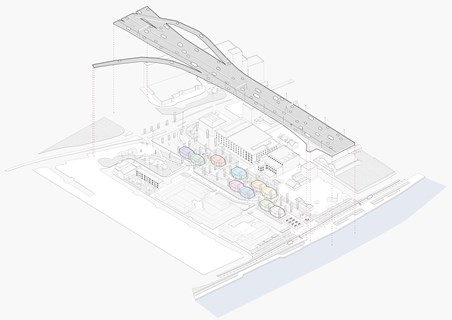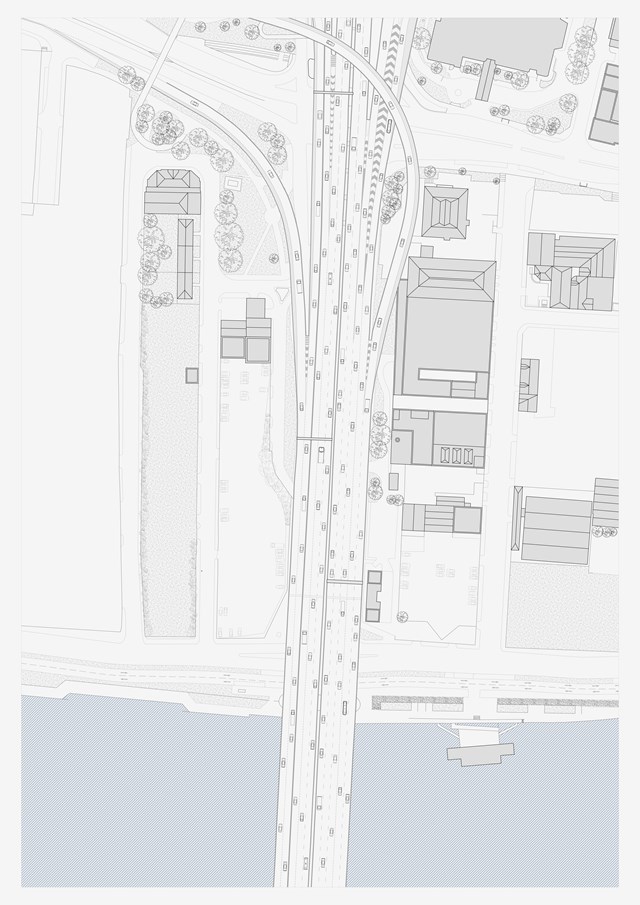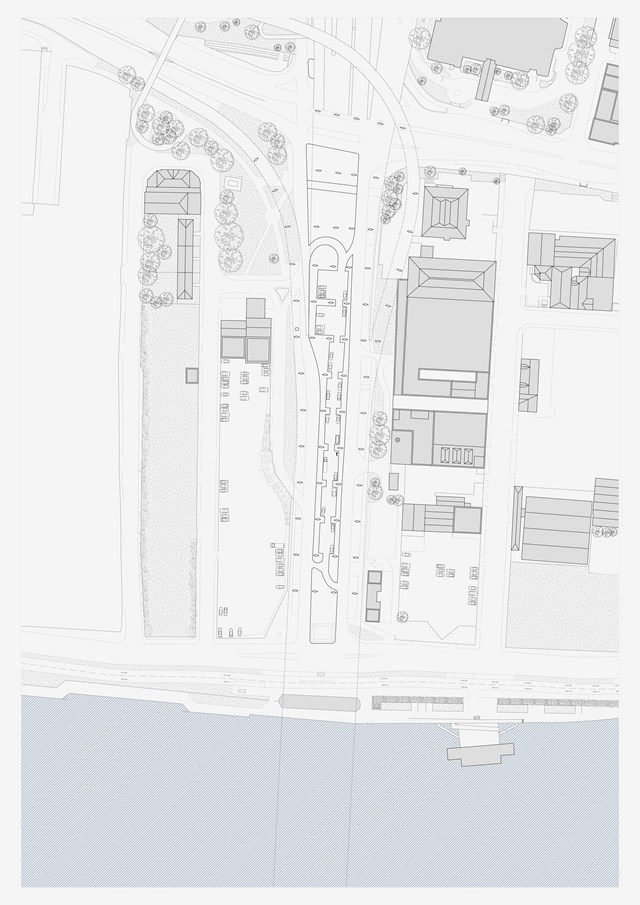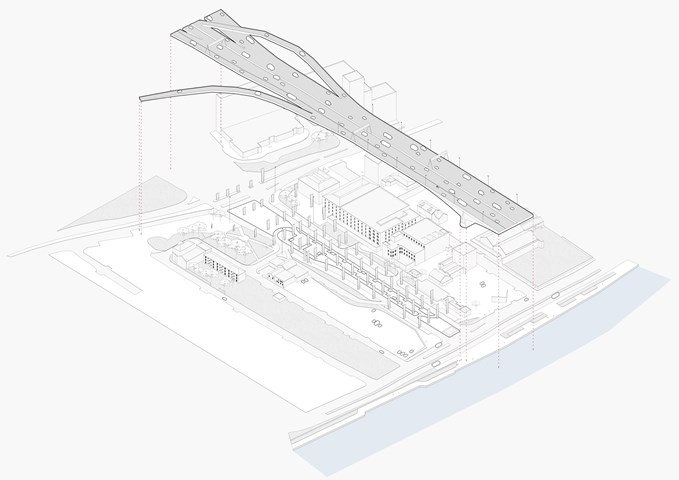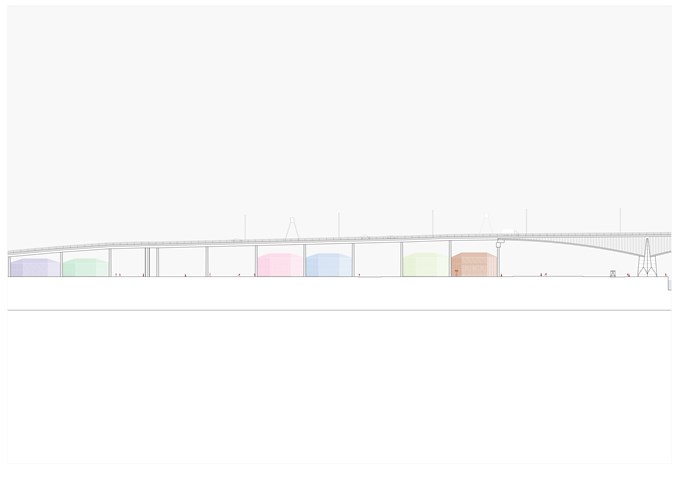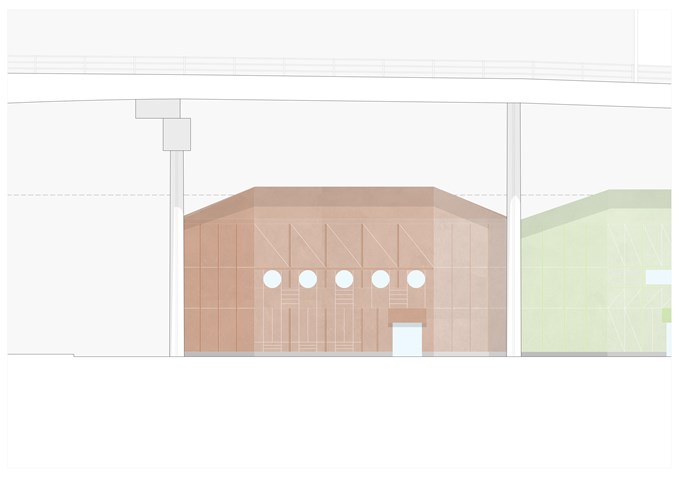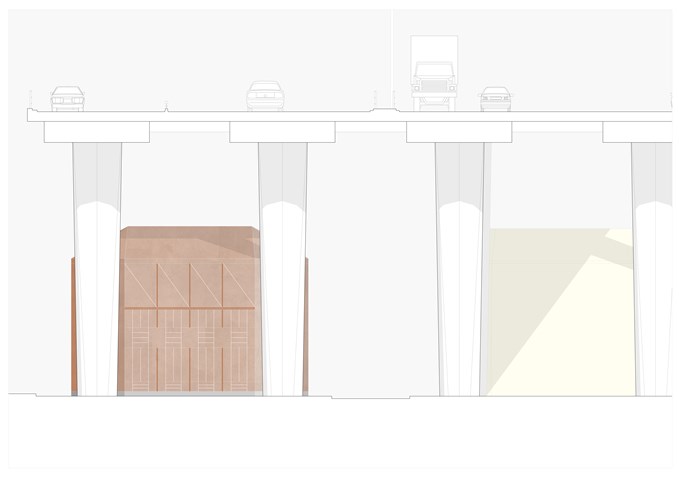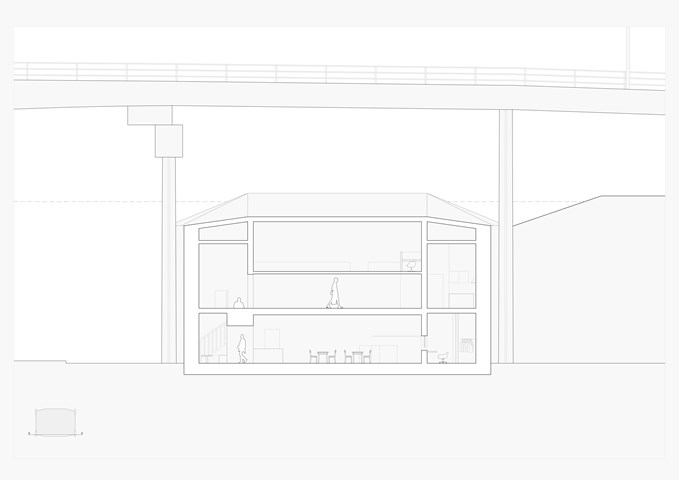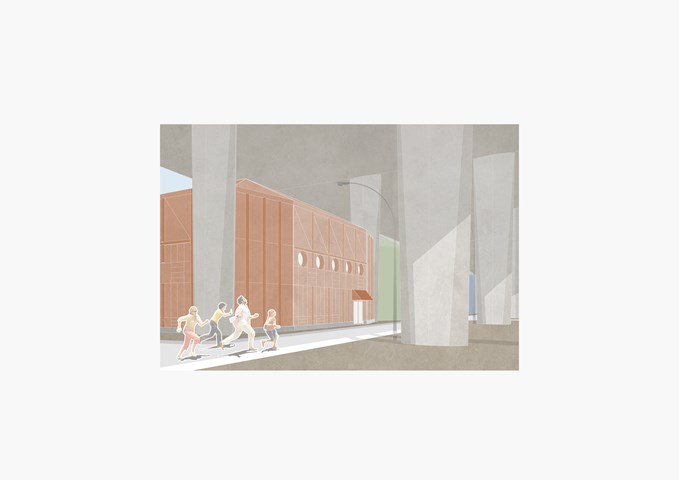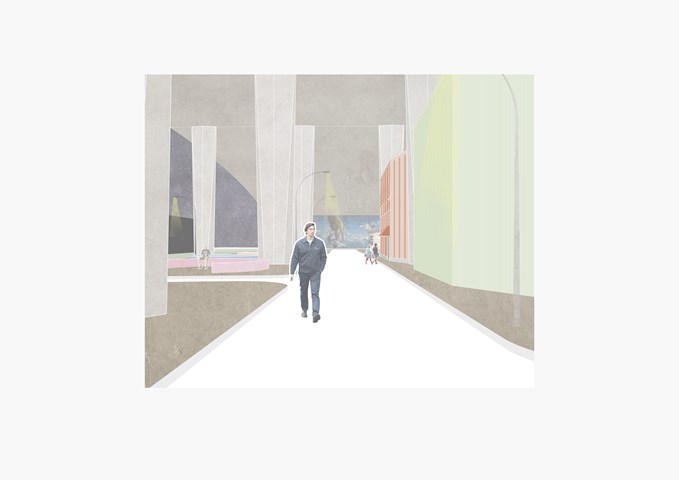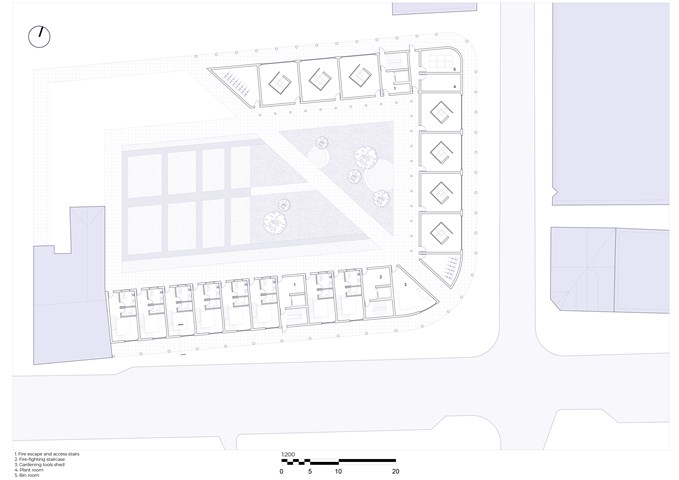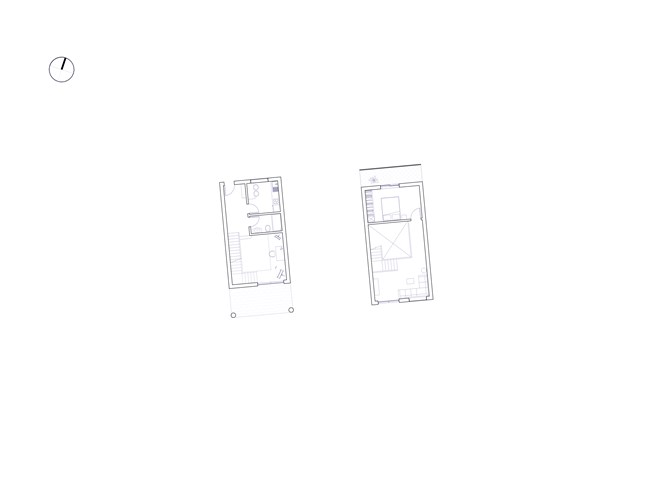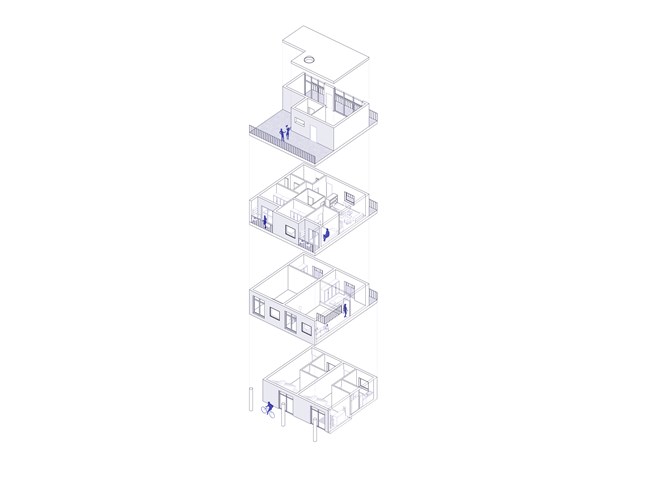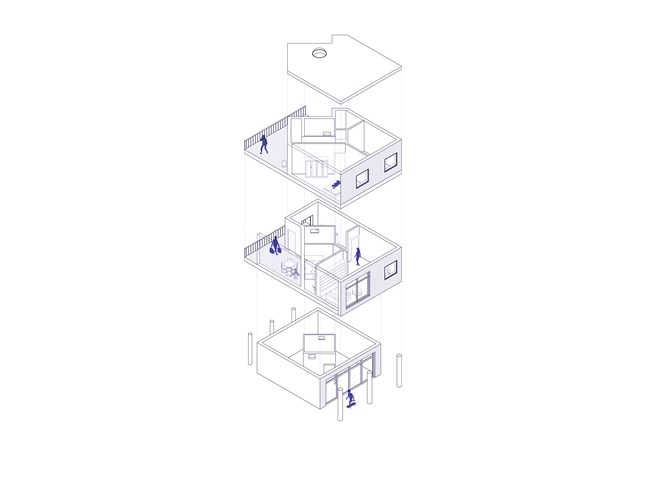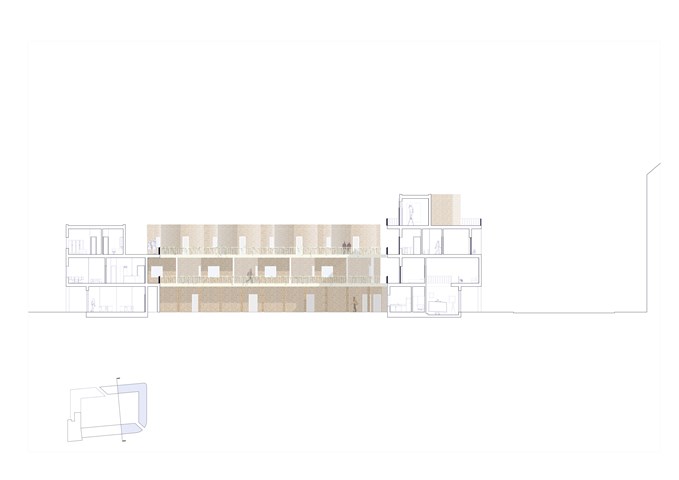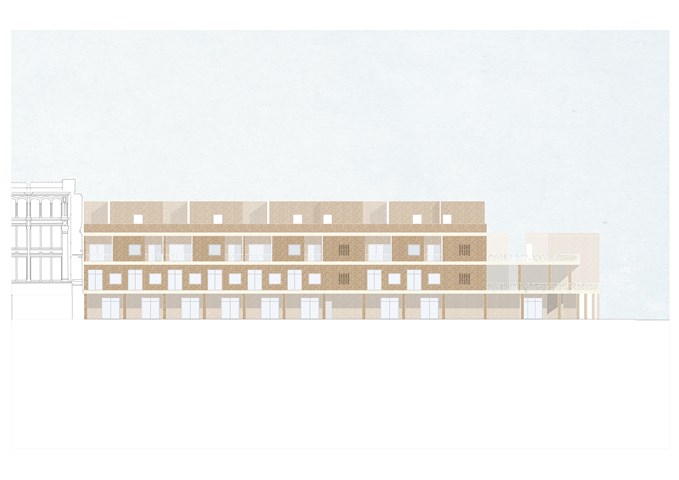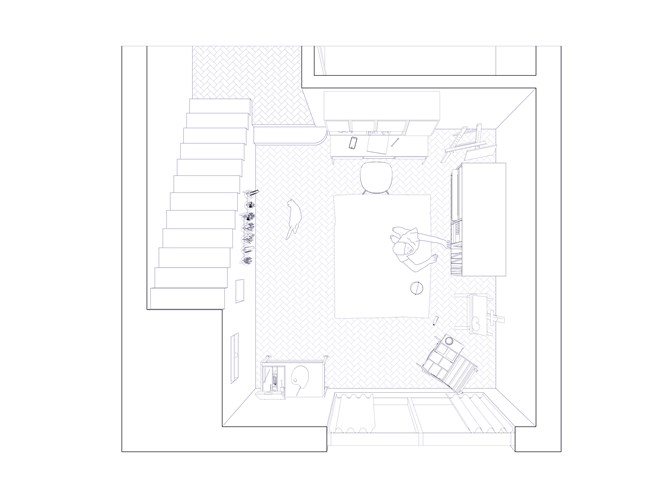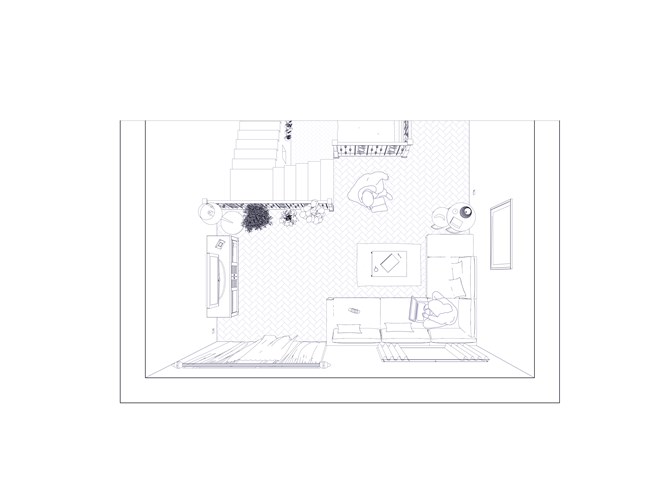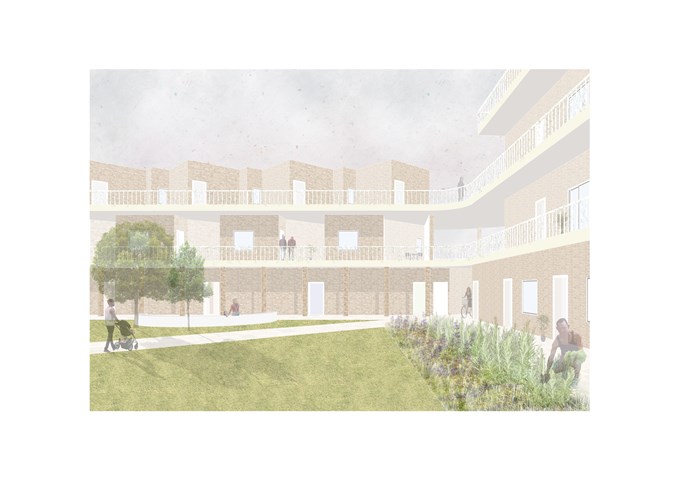Jazz Club under the M8
A proposal for the urban regeneration of the derelict Kingston Bridge area, used for parking to this day.
The project aims to create a new street, populated by colourful timber-framed pods that sit in-between each pair of columns. The new urban environment is pedestrianised (of the present traffic arteries, only the bus lane has been retained), reinforces its proximity to the river front, creates green spaces and is comprehensive of skateboard ramps, playgrounds and a basketball court.
The idea behind the ‘pods’ stems from thorough research on railway viaducts of the past, wherein each arch was used and adapted as a commercial activity in its own right. In infrastructures such as the Viaduc des Arts in Paris, and in our own Osborne Street in Glasgow, a paradigm was noticed: 1 arch = 1 commercial activity, a modularity that did not prevent the occasional diversity within the elevations (different fenestration, different colours, different doors etc).
The pods aim to incorporate and re-interpret the same modularity within the M8: here, too, there is one commercial activity within each pair of pillars, and here, too, some variation is guaranteed by different colours, different elevations, different uses etc.
The proposal combines a mixture of daytime and night-time activities, with a Jazz Club inspired by Matisse’s famous Jazz prints being the bookend of the new street.
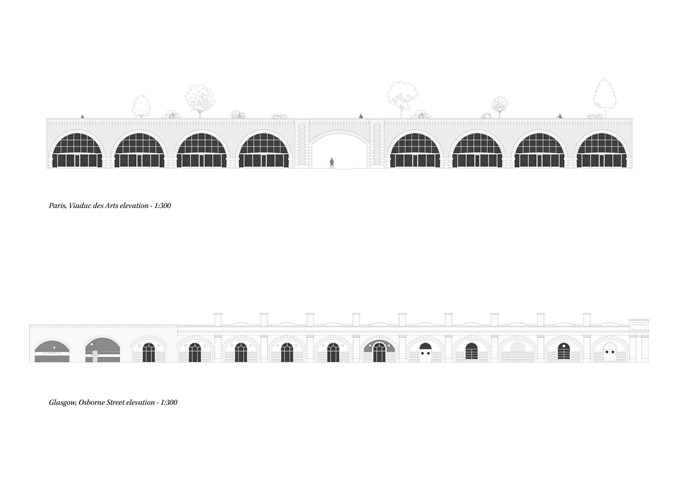
Precedents - Viaducts
The idea behind the ‘pods’ stems from thorough research on railway viaducts of the past, wherein each arch was used and adapted as a commercial activity in its own right. In infrastructures such as the Viaduc des Arts in Paris, and in our own Osborne Street in Glasgow, a paradigm was noticed: 1 arch = 1 commercial activity, a modularity that did not prevent the occasional diversity within the elevations (different fenestration, different colours, different doors etc).
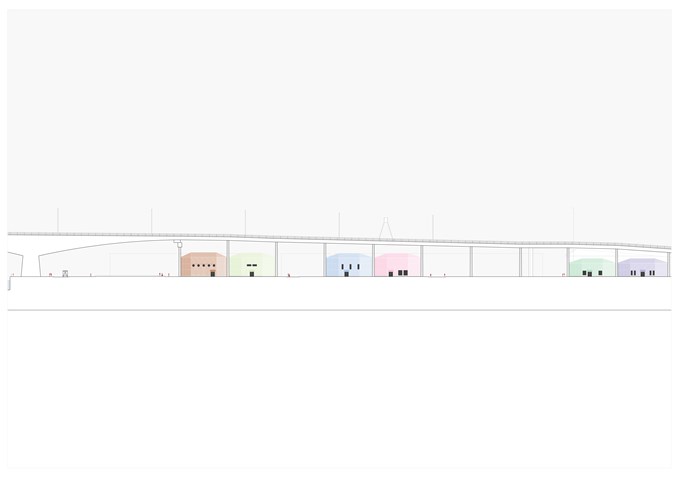
Street Elevation - East, 1:700
The pods aim to incorporate and re-interpret the same modularity within the M8: here, too, there is one commercial activity within each pair of pillars, and here, too, some variation is guaranteed by different colours, different elevations, different uses etc.
Trongate Court Housing
Proposal for Housing on the Candleriggs Site in the Merchant City.
The aim was to create a “shell” with different degrees of “progressive privacy”, encouraging social interaction between residents by means of a courtyard (public), an open access balcony (semi-public), before entering the flats (private). The open access balcony is not only a means to an end (access to the flats), but also a way to encourage socialization among the residents, providing frontal interaction, not unlike the italian street.
The end user of the development is anyone working in a creative field: artists, sculptors, artisans, graphic designers, etc; the proposal provides integrated art facilities within each flat.
The reason behind the positioning of the art-studios at ground floor level is threefold: providing the users with a studio/office space accessible from their own flat (catering for a post-pandemic world); shielding the residential/private aspect of each flat from the public eye; taking advantage of the prominent location of the building.
Artisan/artist studios will simultaneously act as shop-fronts, and will be located on Trongate, mirroring the commercial nature of the street; creative office-like studios will be positioned on Candleriggs, mirroring the service-orientated nature of the street.
